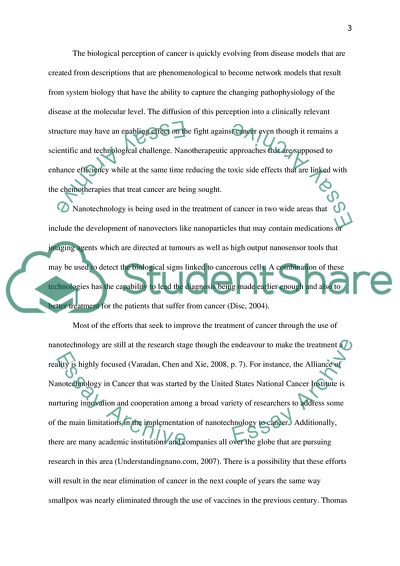Cite this document
(“Evaluate the current applications of nanotechnology in medicine Essay - 3”, n.d.)
Evaluate the current applications of nanotechnology in medicine Essay - 3. Retrieved from https://studentshare.org/health-sciences-medicine/1652240-evaluate-the-current-applications-of-nanotechnology-in-medicine-discuss-the-potential-future-of-nanomedicine-based-on-current-issues-identified-in-the-literature
Evaluate the current applications of nanotechnology in medicine Essay - 3. Retrieved from https://studentshare.org/health-sciences-medicine/1652240-evaluate-the-current-applications-of-nanotechnology-in-medicine-discuss-the-potential-future-of-nanomedicine-based-on-current-issues-identified-in-the-literature
(Evaluate the Current Applications of Nanotechnology in Medicine Essay - 3)
Evaluate the Current Applications of Nanotechnology in Medicine Essay - 3. https://studentshare.org/health-sciences-medicine/1652240-evaluate-the-current-applications-of-nanotechnology-in-medicine-discuss-the-potential-future-of-nanomedicine-based-on-current-issues-identified-in-the-literature.
Evaluate the Current Applications of Nanotechnology in Medicine Essay - 3. https://studentshare.org/health-sciences-medicine/1652240-evaluate-the-current-applications-of-nanotechnology-in-medicine-discuss-the-potential-future-of-nanomedicine-based-on-current-issues-identified-in-the-literature.
“Evaluate the Current Applications of Nanotechnology in Medicine Essay - 3”, n.d. https://studentshare.org/health-sciences-medicine/1652240-evaluate-the-current-applications-of-nanotechnology-in-medicine-discuss-the-potential-future-of-nanomedicine-based-on-current-issues-identified-in-the-literature.


